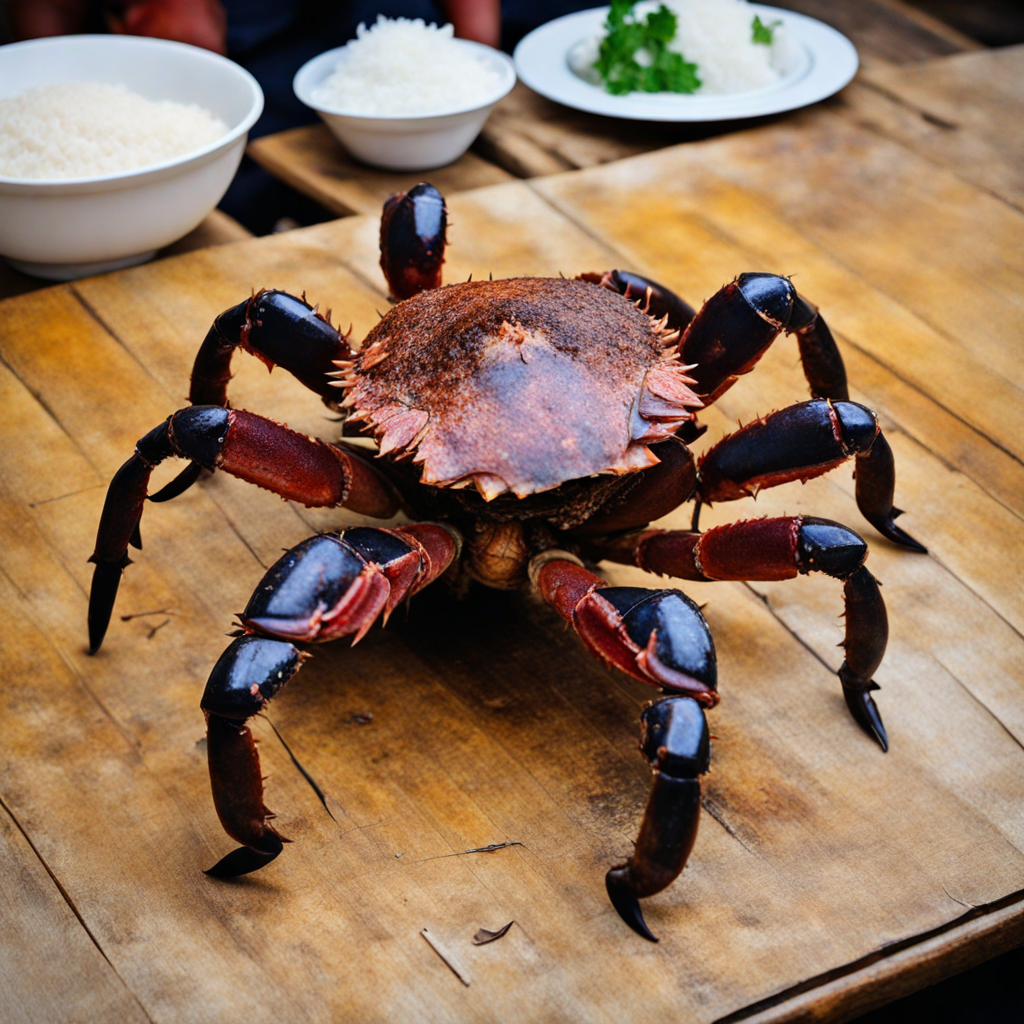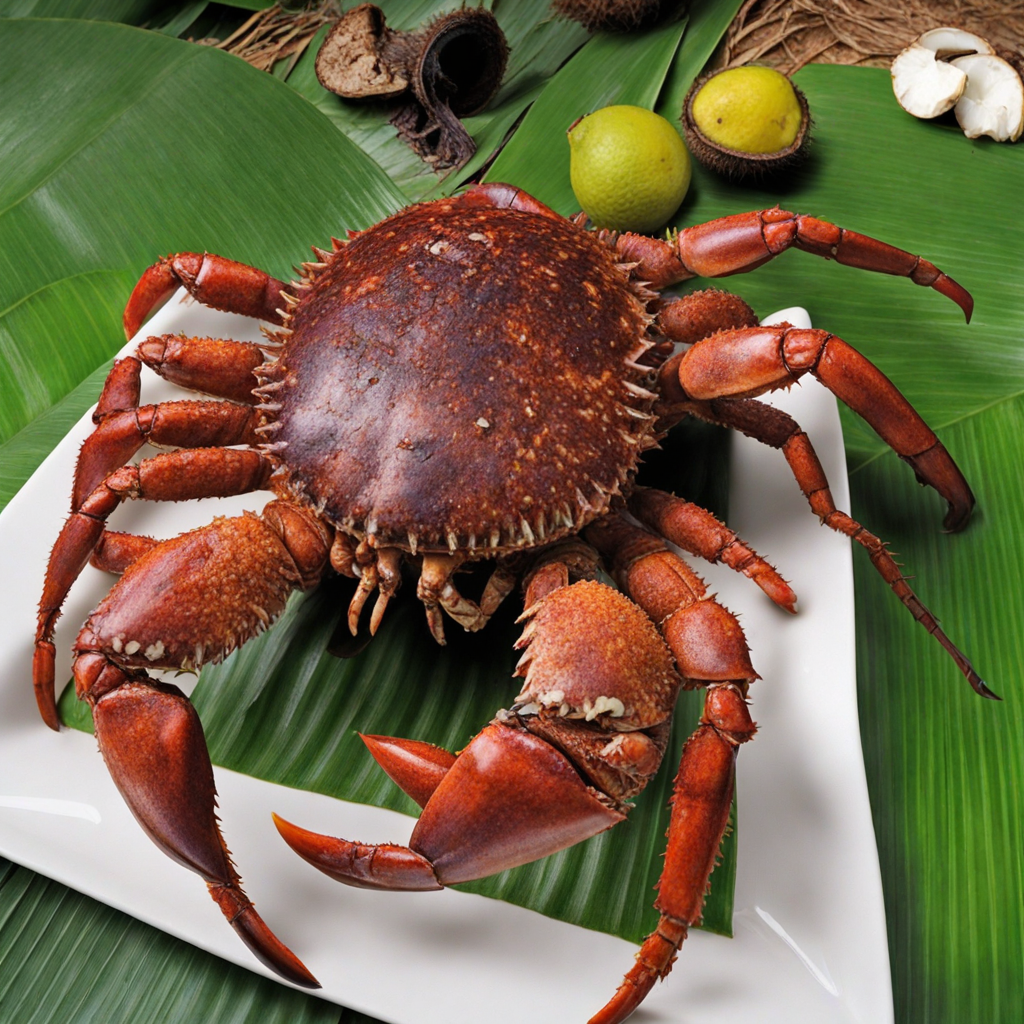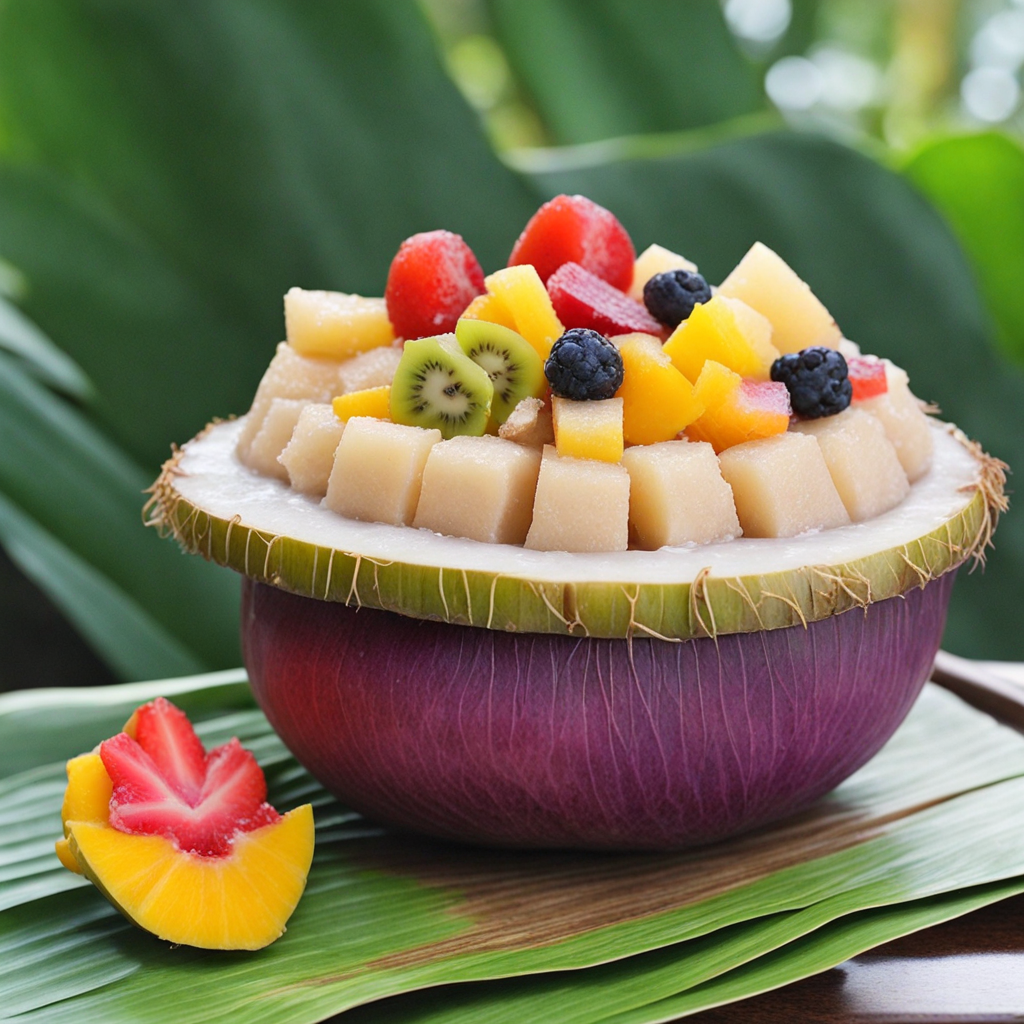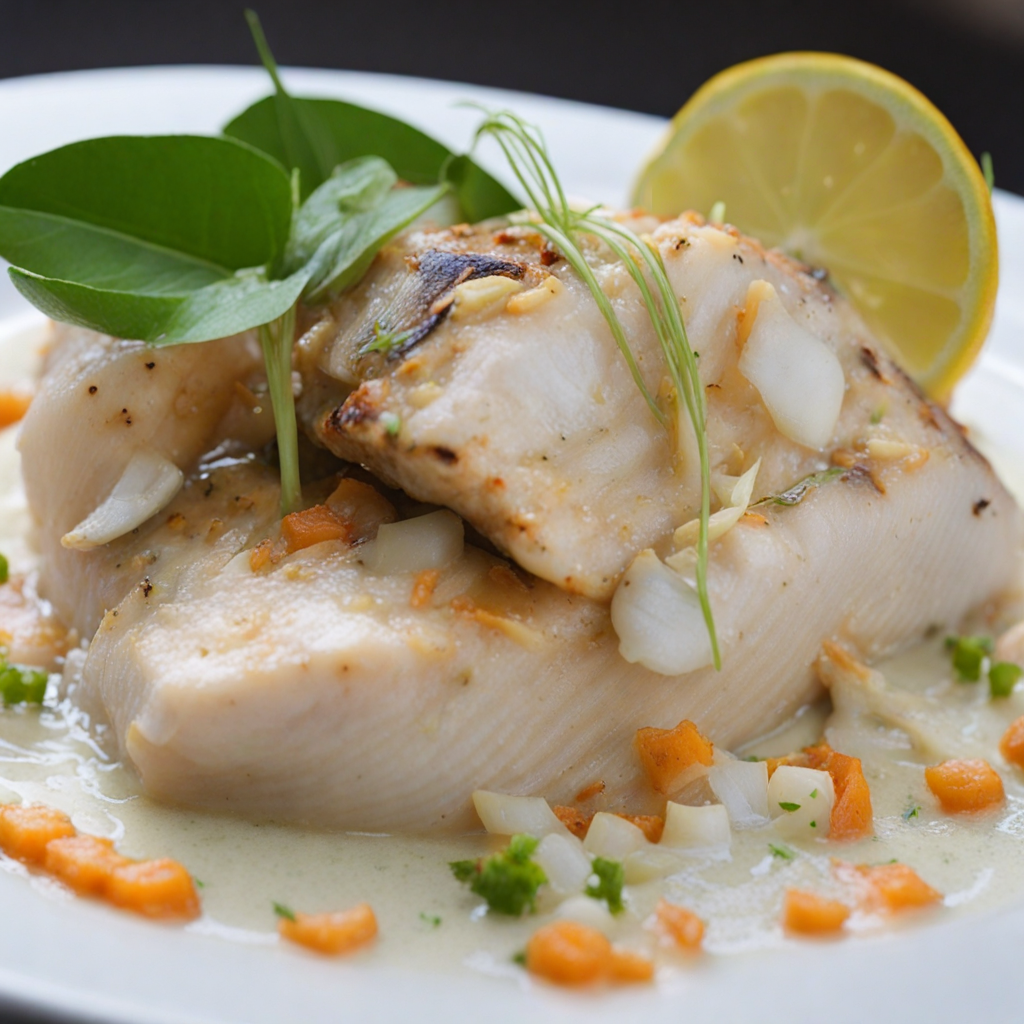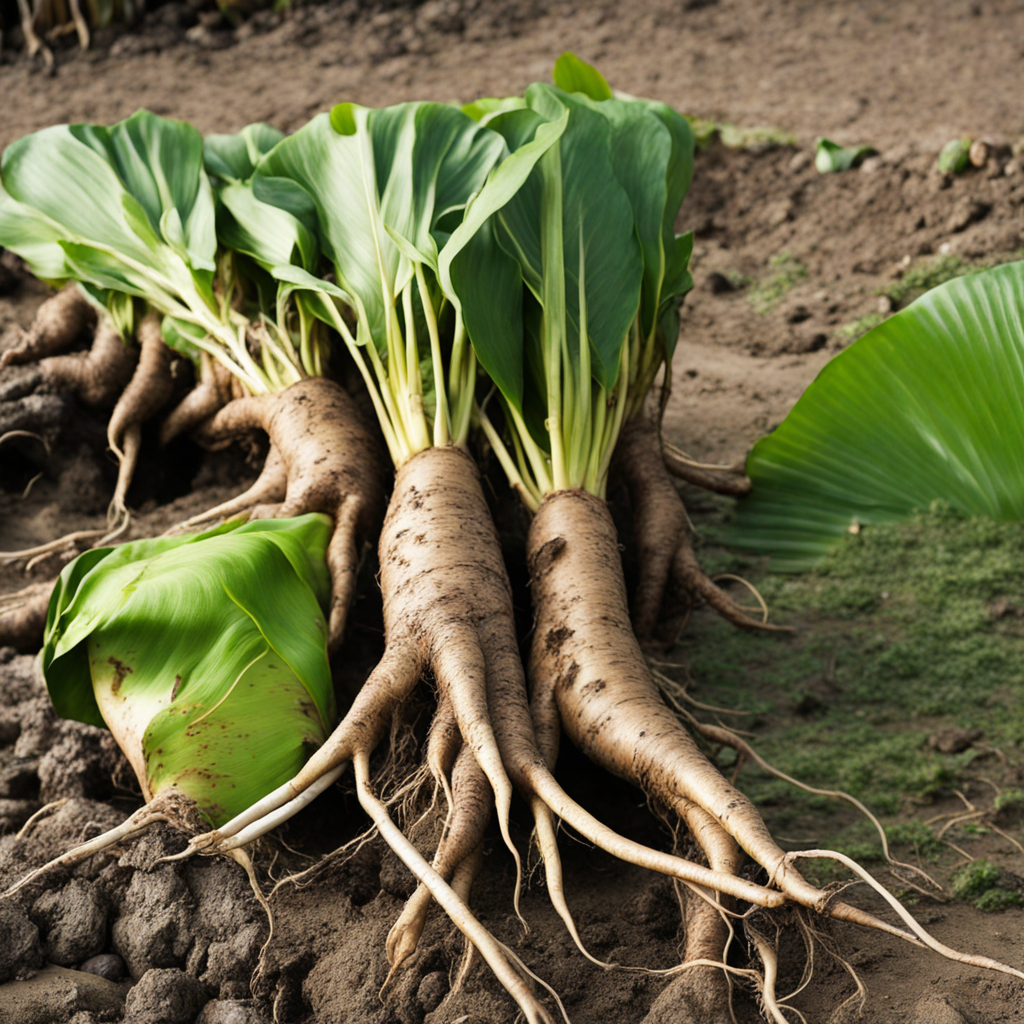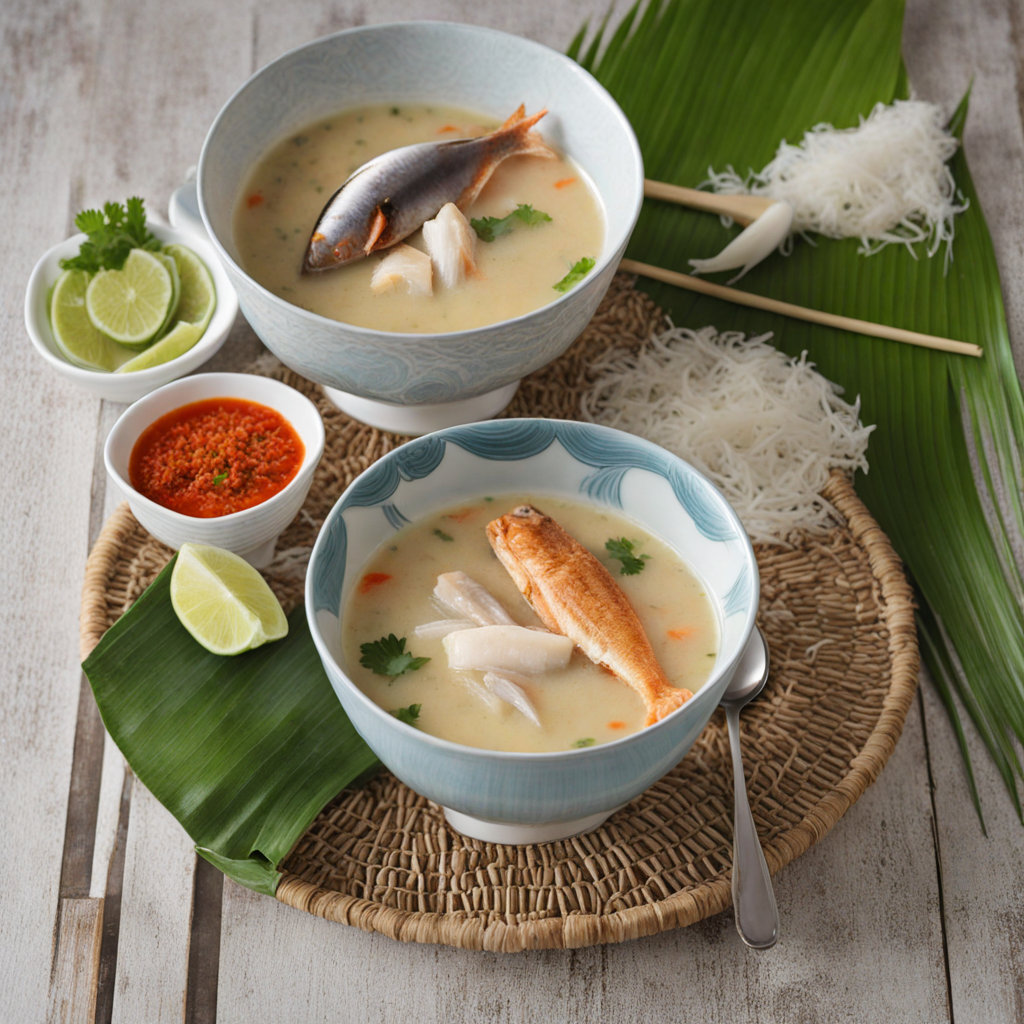Coconut Crab
Coconut crab, a unique delicacy from the remote island nation of Tuvalu, offers a gastronomic experience unlike any other. This remarkable crustacean is the largest terrestrial arthropod in the world, and its taste is often described as a sublime blend of sweet and savory, reminiscent of both lobster and crab. The texture is tender yet firm, with a rich, buttery quality that melts in your mouth, making it a highly sought-after dish among seafood enthusiasts. When prepared, the meat is typically steamed or grilled, allowing the natural flavors to shine while infusing hints of the island's tropical essence. In Tuvalu, coconut crabs are often harvested at night, adding an element of adventure to the dining experience. They are typically paired with local ingredients such as coconut milk, which enhances the dish's tropical flair, and a squeeze of lime, balancing the sweetness with a refreshing acidity. The crabs are also sometimes served with a side of roasted taro or sweet potatoes, creating a delightful contrast in flavor and texture that complements the main attraction. Each bite transports you to the sun-kissed shores of Tuvalu, where the ocean meets the land in a culinary embrace. What makes coconut crab truly special is not just its taste, but the deep cultural significance it holds within Tuvaluan society. Traditionally, coconut crabs are a symbol of celebration and communal feasting, often enjoyed during special occasions and family gatherings. This connection to local customs enriches the experience, making each meal a reminder of the island’s heritage. For those willing to explore the exotic flavors of the Pacific, indulging in coconut crab in Tuvalu is not just about savoring a dish; it's about immersing oneself in the vibrant culture and natural beauty of this enchanting archipelago.
How It Became This Dish
Kanikani is a delightful traditional dish from Tuvalu, a small island nation in the Pacific Ocean. This unique food item reflects the rich cultural heritage and the natural bounty of the Tuvaluan islands. The preparation and consumption of Kanikani offer valuable insights into the history, cultural significance, and evolution of Tuvaluan cuisine. Origins The origins of Kanikani can be traced back to the early Polynesian settlers who arrived in Tuvalu, historically known as the Ellice Islands. These settlers brought with them a wealth of knowledge about farming, fishing, and food preparation, which was shaped by the local environment and available resources. The indigenous people utilized the rich marine ecosystem surrounding Tuvalu, which is characterized by coral reefs and abundant fish species. The name "Kanikani" itself derives from the Tuvaluan word for "to sing," which resonates with the celebratory nature of the dish, often enjoyed during communal gatherings and festive occasions. Kanikani is primarily made from fresh fish, typically tuna or marlin, which is marinated in a mixture of coconut cream, lime juice, and sometimes chili, before being served with a side of taro or breadfruit. The dish exemplifies the Tuvaluan ethos of utilizing local ingredients that are sustainable and easily accessible. The use of coconut, a staple in many Pacific Island cuisines, further indicates a deep connection between the people and their natural environment, as coconut palms flourish in the sandy soils of Tuvalu. Cultural Significance Kanikani holds a special place in Tuvaluan culture, serving not just as a meal but also as a symbol of community and hospitality. Sharing food is a fundamental part of Tuvaluan life, and Kanikani is often prepared for gatherings, celebrations, and important events, such as weddings and traditional ceremonies. The dish embodies the spirit of togetherness, as it is typically made in large quantities to accommodate family and friends. The preparation of Kanikani is often accompanied by rituals and practices that highlight its cultural significance. For instance, the process of selecting the fish, marinating it, and mixing it with coconut cream can involve the entire family, fostering a sense of unity. The dish is often accompanied by traditional songs and dances, which not only enhance the dining experience but also serve as a way to pass down cultural stories and values to younger generations. Furthermore, Kanikani is a representation of the Tuvaluan relationship with the sea. The ocean is regarded as a source of life, providing sustenance and spiritual connection. Fishing is not merely a means of survival but also a practice steeped in tradition, with specific customs and taboos governing fishing practices. By consuming Kanikani, Tuvaluans honor this relationship, celebrating the abundance provided by the sea. Development Over Time As Tuvalu has navigated the complexities of globalization and modernization, the preparation and consumption of Kanikani have evolved while retaining their traditional roots. The introduction of new culinary influences and ingredients has diversified the ways in which Kanikani is prepared and enjoyed. For example, while the traditional recipe emphasizes simplicity and the use of local ingredients, some contemporary variations may incorporate additional spices or condiments, reflecting the influence of international cuisine. Tourism has also played a role in the evolution of Kanikani. As Tuvalu became more accessible to visitors, local chefs began to adapt traditional recipes to cater to diverse palates. This adaptation has led to the emergence of fusion dishes that blend traditional Tuvaluan flavors with international culinary techniques. While this may raise questions about authenticity, it also highlights the dynamic nature of food culture, where tradition and innovation coexist. In recent years, there has been a growing movement within Tuvalu to preserve traditional culinary practices, including the making of Kanikani. As younger generations become more aware of their cultural heritage, there is a renewed interest in learning traditional cooking methods and sustaining local agricultural practices. Community workshops and cultural festivals often feature Kanikani as a centerpiece, allowing both locals and tourists to engage with Tuvaluan cuisine and understand its significance. Moreover, the global conversation around sustainability and food security has brought renewed attention to the importance of traditional food systems in Tuvalu. Local communities are increasingly recognizing the value of sourcing ingredients sustainably and minimizing the impact of modern agricultural practices. Kanikani, with its emphasis on fresh, local fish and coconut, serves as a poignant reminder of the importance of environmental stewardship and the interconnectedness of culture and cuisine. Conclusion Kanikani is more than just a dish in Tuvalu; it is a representation of the island's history, culture, and values. Its origins reflect the deep connection between the Tuvaluan people and their natural environment, while its significance in communal celebrations underscores the importance of togetherness and hospitality. Over time, Kanikani has adapted to changing circumstances, embracing new influences while remaining rooted in tradition. As Tuvalu continues to face challenges related to climate change and globalization, the preservation of its culinary heritage, exemplified by Kanikani, becomes increasingly vital. By cherishing and sharing this dish, Tuvaluans honor their ancestors and ensure that future generations will continue to enjoy the flavors and stories that define their unique culture. Kanikani is not just a meal; it is an edible narrative, a celebration of life, and a testament to the enduring spirit of the Tuvaluan people.
You may like
Discover local flavors from Tuvalu


